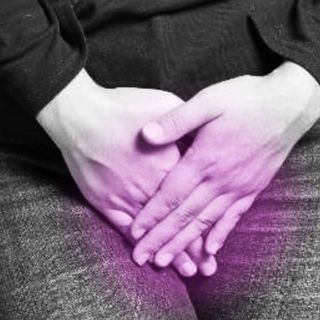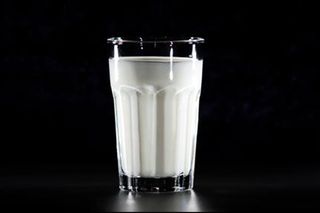
Cow’s Milk: To Drink or Not to Drink?
Humans weren’t originally able to digest milk beyond infancy; some still can’t.

Humans are about 300,000 years old. And yet, our species started drinking milk only about 10,000 years ago — that too, on rare occasions when early farmers and pastoralists in western Europe, who lived with domesticated animals such as cows, became the first group of humans to start this practice.
And it continues till date. Today, humans are the only species on earth that drink milk from another lactating species.
But over the past few years, whether we should continue drinking milk into adulthood, or not for reasons such as it is not ethical to exploit cows for their milk, has become a hot topic of debate. “What gluten intolerance did for bread, lactose intolerance is doing to milk,” reported The Guardian. Citing a blog, it added, “Maybe people are drinking less milk because it is poisonous to many of us.”
But is it?
Human’s weren’t originally able to drink other animals’ milk; some still can’t
Milk contains a type of sugar known as lactose. It’s different from the type of sugars found in fruits or other sweet foods. As babies, our bodies produce an enzyme called lactase, which enables the digestion of lactose found in our mother’s milk. For 70% of the world’s population, once they are weaned off breast milk, the production of lactase stops. Without lactase, digesting lactose-laden milk becomes difficult. Researchers say it’spossible that the first humans who drank milk experienced bloating, cramps, flatulence, diarrhea or maybe even nausea.
However, with evolution came humans’ abilities to keep their lactase enzymes active into adulthood. This came to be known as lactase persistence, which enables humans to drink milk without experiencing any of the side effects mentioned above. But the catch is, only a few populations are lactase persistent — 90% of people in northern Europe are, and so are a few groups of people in Africa and the Middle East. But few people from Africa, Asia (as few as 5% of Asians) and South America are lactase persistent; most are, in fact, lactase deficient, which means they have the same side effects after drinking milk as the first group of humans did.
But, lactase deficiency doesn’t mean lactase intolerancy. Dr. Miranda Lomer, a senior consultant dietitian in gastroenterology at Guy’s and St Thomas’ NHS Foundation Trust, told The Guardian, adding that even people who are lactase intolerant can digest milk in tea (around 50ml) or on cereal if consumed in quantities between 250 ml to 375 ml a day.
The side effects from drinking milk don’t happen because people are allergic to milk, it just that their immune system isn’t responding or producing lactase to digest the milk. How can you know whether you’re one of them?
Dr. Lomer offers a suggestion. Drink a large glass of milk. After 24 hours, if you find yourself bloated, experience gurgling or diarrhea, then you are intolerant. “But you may still be able to have milk in cereal and tea,” Dr. Lomer adds.
Related on The Swaddle:
Does the Ideal Healthy and Environment‑Friendly Plant Milk Exist? Not Really.
Do humans need milk?
How milk came to be considered essential to human development, writes Michael Marshall for BBC Future, dates back to early farmers. People who kept livestock were also exposed to their diseases. “It may be that drinking cow’s milk provides antibodies against some of these infections. Indeed, milk’s protective effect is thought [to] be one of the benefits of breastfeeding,” he said. On its own, fresh milk was considered baby food — rich in nutrients — wrote Veronique Greenwood in another article for BBC Future. So when infant mortality rates rose in cities, there was a need for standards and practices for making milk safer, such as pasteurization. It was during this time too that treatments were centered around giving the ailing only the cleanest and purest things to eat. Historian Deborah Valenze told Greenwood, “You might say it was an age of health foods and health movements. Modern life and food were complicated and corrupt, but milk, consumed by everyone early in life, was simple, earthy, and natural, in the logic of the time. (The fact that it was white – the color of purity – didn’t hurt either.) To boot, milk had fat, carbohydrates, and protein, all three of the components needed by the human body.”
Then came considering milk the best source of calcium. Research proves that cow’s milk contains calcium, vitamins A and D and riboflavin, in addition to protein. It is also not as heavy on calories, Dr. Lomer said.
While not all research conclusively proves milk is responsible for strong bones, plenty of studies suggest it’s an important component of a bone-healthy diet.
Take for instance, Japan and China, where dairy is not a large component of traditional diet: the incidence of hip fracture, which is caused by poor levels of calcium in the bones, is 150% higher than the incidence of the injury among populations from American and Europe, where milk is a dietary staple.
However, these studies have taken into account levels of calcium in people as adults; it is known that bone strength develops more in childhood depending on children’s diets. “When we look at studies of children who have an allergy to cow’s milk, for example, we see that the strength of their bones is significantly compromised by the lack of milk in their diet and that desensitisation through treatment, so their diet can include milk, also strengthens their bones,” Sophie Medline, a lecturer in nutrition and dietetics at King’s College London, writes for The Conversation.
In addition, children who were given alternative sources of calcium still found their bone strength compromised. “This suggests that calcium-containing alternatives to dairy are still not good enough at promoting bone density in children,” Medline concludes.
But even while adult consumption of milk hasn’t been shown to affect bone health, drinking less milk can lead to a decrease in other nutrients in the body, Medlin writes. If dairy is replaced by a diet that contains the same amount of calcium from plant sources such as green leafy vegetables or fortified soya milk, then there is a decrease in levels of protein, potassium, magnesium, phosphorus, riboflavin, vitamins A and B12 too, according to Medlin. “Milk and dairy foods are also a great source of all essential amino acids which are the small protein molecules that build muscles and repair tissue damage. Obviously, the protein and micronutrients could be found from other sources but obviously not without careful planning,” Medlin adds.
“When it comes to health, we probably don’t need dairy in our diets – as adults – but milk and dairy foods are convenient and good value and provide lots of essential nutrients which are trickier to source from other foods,” she writes.
So, the bottom line is: “Milk, it seems, is not down and out. If anything it’s still on the up – even if our bodies have mostly stopped evolving in response to it,” reported BBC Future.
Anubhuti Matta is an associate editor with The Swaddle. When not at work, she's busy pursuing kathak, reading books on and by women in the Middle East or making dresses out of Indian prints.
Related


Study: Women With Bulimia Nervosa Face Higher Risk of Cardiovascular Disease
